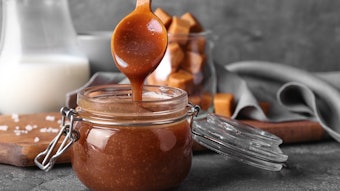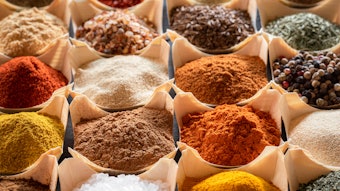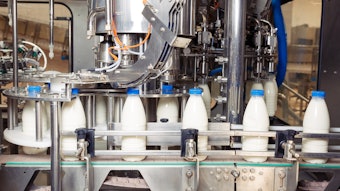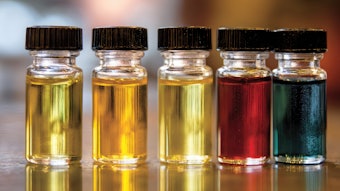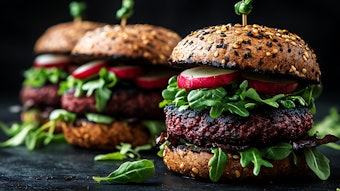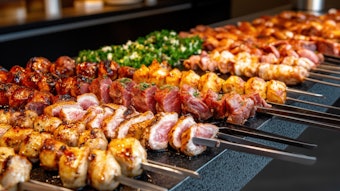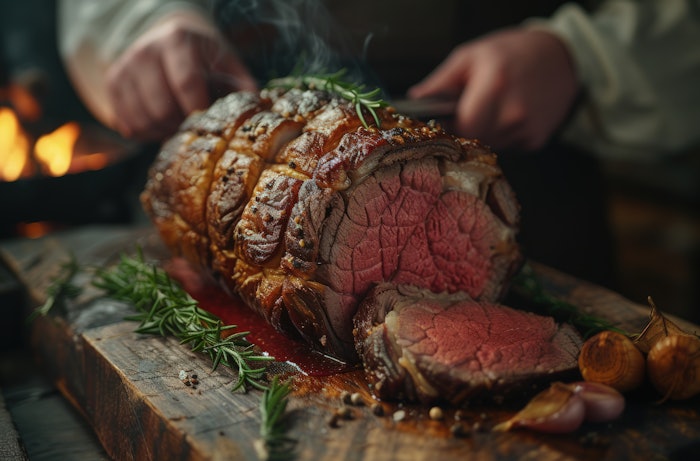
It is always fun to play with little used ingredients with complex odor profiles. More often than not they are little used simply because they are difficult to use, but that does not mean that they are not interesting. Often it is just an indication of the increasing time constraints we are all subject to.
4-(Methylthio)butan-1-ol (FEMA #3600, CAS Number #20582-85-8) has a complicated profile including meaty, eggy and metallic notes. Meaty and eggy notes frequently work well in combination, but adding distinctly metallic aspects does pose problems, especially outside the savory area.
Note that the dose rates given throughout this article are the levels suggested for use in flavors intended to be dosed at 0.05% in ready-to-drink beverages or in a simple bouillon.
Savory Flavors
Beef, Roast: This ingredient is quite bright, and would work best in beef flavors in conjunction with a heavier meaty note, At around 20 ppm it does add a very attractive, slightly “bloody” note.
Cheese: The usefulness of 4-(methylthio)butan-1-ol in Cheddar cheese flavors is much less obvious, but it does work very well in both regular and toasted versions of The usefulness of 4-(methylthio)butan-1-ol in Cheddar cheese flavors is much less obvious, but it does lend itself to both regular and toasted profiles.HandmadePictures at Adobe Stock
The usefulness of 4-(methylthio)butan-1-ol in Cheddar cheese flavors is much less obvious, but it does lend itself to both regular and toasted profiles.HandmadePictures at Adobe Stock
Chicken: 4-(Methylthio)butan-1-ol does not mesh quite so well with chicken flavors, but 10 ppm rounds out the roasted note and helps in the eternal quest to soften decadienal.
Lamb: Lamb flavors can be broadly grouped with beef flavors. Levels ranging from 10 to 20 ppm can give a slightly undercooked expression.
Liver: The same is equally true for liver flavors, with the same 10 to 20 ppm levels of 4-(methylthio)butan-1-ol being very attractive.
Berry Flavors
Blackberry: The effect of 4-(methylthio)butan-1-ol in most berry flavors is clearly not to function as the primary sulfur note. It is instead an attractive modifier. Blackberry flavors rely primarily on dimethyl sulfide, but 20 ppm of this raw material rounds out the simpler sulfur notes nicely.
Blackcurrant: The function of this raw material in blackcurrant flavors is very similar. Despite the obvious catty notes, dimethyl sulfide is very important. Thirty ppm helps to blend these sulfur notes into a more harmonious complex.
Raspberry: Raspberry flavors are similar to blackberry flavors in respect of sulfur notes, and 20 ppm of 4-(methylthio)butan-1-ol works equally well.
Tropical Fruit Flavors
Banana: Within the broad category of fruit flavors, tropical flavors are clearly the most promising area for 4-(methylthio)butan-1-ol. Banana flavors gain lift and complexity with levels of addition in the region of 20 ppm.
Guava: 4-(Methylthio)butan-1-ol fits ideally into the complex sulfur profile of guava flavors. Eighty ppm is a very effective level of addition.
Mango: Twenty pm is an attractive level for 4-(Methylthio)butan-1-ol in mango flavors. It is equally effective in both soft and also more harsh skin-oriented profiles. 4-(Methylthio)butan-1-ol adds significantly to the realism of papaya flavors.Svetlana Kolpakova at Adobe Stock
4-(Methylthio)butan-1-ol adds significantly to the realism of papaya flavors.Svetlana Kolpakova at Adobe Stock
Papaya: 4-(Methylthio)butan-1-ol adds significantly to the realism of papaya flavors. Forty ppm is a reasonable level of addition.
Passionfruit: The dominant catty notes in passionfruit flavors can already be quite complex, and this is noticeably enhanced by the addition of around 40 ppm of 4-(methylthio)butan-1-ol.
Pineapple: Similar, even slightly higher, levels are equally effective in pineapple flavors. The effect is most attractive in flavors aimed at the character of fresh pineapples.
Other Fruit Flavors
Apples: Subtle additions are more appropriate in most of the remaining types of fruit flavors. Ten pm of 4-(methylthio)butan-1-ol adds interest and authenticity to all styles of apple flavors.
Apricot and Peach: Apricot and peach flavors both enjoy a hint of catty notes, but this does not alter the optimum level of 4-(methylthio)butan-1-ol, again 10 ppm.
Cherry: Cherry flavors cover quite a wide range of different profiles. Fortunately 4-(methylthio)butan-1-ol is equally interesting in all of them. Ten ppm is a good starting point.
Cranberry: The 10 ppm level is also great in cranberry flavors, giving an effect that is not overtly sulfury, but adding authenticity.
Grape, Concord: The role of sulfur notes in Concord grape flavors is a little more pronounced than in most other fruit flavors. 4-(Methylthio)butan-1-ol can be used alone, but it is more effective when used in combination, again at 10 ppm.
Pear: Ten ppm is also a great starting point for this raw material in pear flavors. The effect is very similar to that in apple flavors, increased authenticity. There is a common thread between obviously savory flavors, such as roast beef, and dairy flavors that involve some element of heat.baibaz at Adobe Stock
There is a common thread between obviously savory flavors, such as roast beef, and dairy flavors that involve some element of heat.baibaz at Adobe Stock
Dairy Flavors
Butter, Fresh: 4-(Methylthio)butan-1-ol adds an interesting sulfury edge to butter flavors. Levels vary from five to 20 ppm.
Cream, Fresh: The same 20 ppm level of addition works equally well in fresh cream flavors.
Milk: There is a common thread between obviously savory flavors, such as roast beef, and dairy flavors that involve some element of heat. This is most evident in condensed milk flavors. 4-(Methylthio)butan-1-ol can be effective at levels ranging from 30 ppm up to 100 ppm, depending on the style of flavor.
Other Flavors
Brandy: This is not a raw material that has an obvious home in spirit flavors. Nevertheless, it is interesting to try in brandy flavors at up to 10 ppm.
Butterscotch, Caramel and Toffee: With these three flavors we see a connection to the impact of 4-(methylthio)butan-1-ol in condensed milk flavors. Ideal levels vary, but are generally in the range from 20 to 40 ppm.
Molasses and Brown Sugar: Lower levels of 4-(methylthio)butan-1-ol are better in these profiles. Ten ppm works well in most brown sugar flavors. Higher levels can apply to more aggressive molasses flavors.
